Trusted by industry-leading teams
Discover how customers improve releases, reduce risk, and accelerate growth.
See all stories
Winter 2026 G2 Grid Report Leader in Feature Management LaunchDarkly
See why customers love usExplore LaunchDarkly success stories
Relay Network ships secure genAI capabilities for regulated clients with AI Configs
3 weeks
To secure beta launch
"We were able to launch our generative AI feature without turning it into a massive engineering project. Product teams can experiment directly, so we’re not spending hours deploying updates just to test prompt changes."
Brendan Putek, Director of DevOps, Relay Network


Fi Money builds smarter features with warehouse-native analytics
70%
Reduction in total cost of ownership
"The true value of LaunchDarkly is that our product teams can look at their events without getting blocked by analytics, prioritization, and bandwidth."
Auro Lakshman Tadury, Associate Director of Tech Programs, Fi Money


Savage X Fenty keeps shoppers engaged with rapid, reliable experiments
15%
Improvement in site reliability
"LaunchDarkly gave the business teams the confidence that experiments could be run reliably and the data could be trusted."
Alan Chang, Product Management Director


Gamma generates viral conversion growth with warehouse-native experiments for AI features
20%
Lift in paid subscriptions
"Now that we can join our LaunchDarkly experiments to our Snowflake data, we can measure real user and business outcomes. We can take bigger risks in the kinds of AI features we build, and we can validate that they're worth it because we can see downstream impacts all the way through."
Jon Noronha, Co-founder and Chief Product Officer, Gamma


Fortune 100 Health Insurer minimizes downtime for members with controlled, automated software releases
150+
Monthly releases
"As a release manager, better automation and LaunchDarkly have freed me up to actually ask real questions. I can actually know my customer a lot better because I'm not spending 90 percent of my time cutting and pasting."
Sr. Release Manager, Fortune 100 Health Insurer


Modernizing software delivery at Ally Financial
97%
Fewer off-hours releases
"Looking at the data over the past four years from 2020 to 2023: a massive 97% reduction in overnight and weekend releases, while enjoying a 300% increase in production deployments."
Nathan Gray, Director of Digital Engineering Operations


Jack Henry drives innovation in financial services
$50k
Reduced environment costs
"LaunchDarkly enabled us to go from a system stabilization project to a collective, overall stabilization mindset."
Steve Hackett, Software Engineering Senior Manager


How Hireology enables faster, safer software delivery and migration


Gentle deployments mitigate risky releases at AlayaCare
50%
MTTR Reduction
"By tightening our use of LaunchDarkly feature flags and paying closer attention to signals related to error rate, infrastructure performance, and response time, we were able to prevent multiple outages and reduce resolution time."
Jean-Philippe Boudreault, Director of Product and Engineering


Blue Cross of Idaho Cuts Customer Portal Troubleshooting Time by 75%
"With [LaunchDarkly], pinpointing and resolving issues within our portals has never been more efficient."
Abraham Soto, Director of Innovation, Blue Cross of Idaho


Poka goes “flag-first” to transform its release processes and AI innovation
3x
Increase in deployment frequency
"We've received some questions from customers and all we've had to do is adjust an ops flag. We can increase a limit very quickly."
Edmund Lam, Staff Software Developer, AI Enablement


How HP standardizes and scales releases with LaunchDarkly
15%
QA and development time saved
"We were big proponents of the whole idea of shifting left and progressive delivery. LaunchDarkly had a big voice in that space."
Brent Foley, Software Engineer - Platform Infrastructure Team


CCP Games deploys on Fridays and does self-serve experimentation
"LaunchDarkly has enabled self-serve experimentation at CCP. You don’t have to be a data scientist to run valid, actionable experiments. This is unbelievably powerful."
Nick Herring, Technical Director of Infrastructure


Relativity automates risk controls to deliver safer software releases


How Naviance Unlocked Its Monolith to Migrate with Confidence
2x
Monolith commit rate
"In all of these scenarios, what ties together our ability to have high confidence and to answer these questions with good approaches is LaunchDarkly and feature flags."
Adam Hisley, Principal Architect


Learn how LaunchDarkly considerably impacted how application developers at iPipeline built new features.


Christian Dior shortens time to market from 15 minutes to instant updates
90%
Decrease in release time per feature
"LaunchDarkly allowed us to progressively deliver key features with confidence, creating a safety net for developers."
Fabien Gasser, Retail Lead System Architect


Building a culture of experimentation at Stash
4M
Customers across the United States
"LaunchDarkly has played a big part in helping us build a culture at Stash, where we experiment with everything. The fact that we can manage software releases and support experimentation in the same platform is remarkable."
Kahne Raja, Engineering Manager


How feature management helped Hawaiian Airlines respond to a global crisis
50%
Reduction in time to value
"We use LaunchDarkly to release new features to a subset of our guests, gather responses, fine-tune our approach and validate new features in production to be able to deliver a better experience for all travelers."
Manjari Ranganathan, IT Manager


Booz Allen and Recreation.gov react in real-time and reduce release risk
4.2M
Online transactions annually
"With releases on Recreation.gov happening only once or twice a year, there isn’t room for mistakes. Feature flags enable us to silently validate releases in production before public sales and rapidly configure features in real time when needed."
Martin Folkoff, Chief Technologist


Orb delivers scalable, accurate usage-based billing with LaunchDarkly
200ms
Rollback times
"LaunchDarkly is so embedded in our on-call systems. It becomes a natural place for any infrastructure change."
Kshitij Grover, Co-founder and CTO


Vestiaire Collective leads retail innovation with A/B testing and experimentation
"LaunchDarkly is really useful. It saves us a lot of time. It doesn't make sense for us to build our own internal tooling for these kinds of processes. We would never have a return on investment on that."
Hugo Almeida, VP of Engineering


Autodesk Used to Only Release Mobile Features Every 6-8 Weeks. Now, It's Every Week
500%
Mobile app release velocity
"Back when we started our LaunchDarkly journey, releases were really costly for us. Feature flags allow us to decouple the software release and make decisions that reduce the impact to our end users."
Alex Bicalho, Director of Engineering


How Hulu Seamlessly Launched a Major UI update to 39 Million Customers Using LaunchDarkly
39M
Users served UI update
"Can we scale this to a billion devices? Yes, because it doesn't scale with the number of devices or the number of users. The state just grows with the number of LaunchDarkly rules and flags that we have."
Matthieu Labbe, Senior Software Engineer


CMS builds better software faster with less risk
75
Engineering hours saved over 5 months


Coles Transforms the Digital Retail Experience for Millions of Customers
3x
Faster deployment cadence
"LaunchDarkly was critical for our digital transformation project. We wouldn't have gotten to that point without LaunchDarkly. At the peak, we had over 30 engineers all committing code. It would be a nightmare without LaunchDarkly."
Patrik Mihailescu, Senior Engineering Manager


World Kinect increases release velocity by 400%
400%
Increased releases and deployments
"It’s clear that LaunchDarkly is by far the premier feature flagging solution. It has helped accelerate our digital transformation and understand how our features are performing in real-time."
Adam Setch, VP of Architecture, World Kinect


iCIMS controls the pace of releases, giving customers time to adapt


Paramount Improves Developer Productivity 100X With LaunchDarkly
100x
Improvement in developer productivity
"LaunchDarkly is a critical component in our software delivery process. It’s ‘one of the three legs of the stool’, as I like to say. One leg is CI/CD, another is automated testing, and the third is LaunchDarkly feature management."
Dan Skaggs, Technical Director, Content Engineering


Dunelm streamlines experimentation and digital commerce
60s
Rollout increments
"LaunchDarkly has significantly improved our development process. We've developed something we're proud of — what we consider to be a highly effective experimentation platform."
Warren Fitzpatrick, Principal Software Engineer


SmugMug increases conversions with experimentation and A/B testing
"LaunchDarkly gives us a powerful tool for experimentation and A/B testing. We can do it more quickly than before, and our product managers can do it themselves, without having to ask engineers to write code. It makes for far more effective experimentation."
Sheryl Lun, Senior Front-End Engineer, Growth Team


Hireology builds safe, scalable, AI features with LaunchDarkly
<13s
Time to test 4 AI models
"We lean heavily on LaunchDarkly and its capabilities because we know how nimble it makes us."
Scott Gainous, VP of Engineering


Admiral Insurance delivers highly targeted user experiences
<15%
Change failure rate
"LaunchDarkly allows us to create targeted personalized experiences for our customers without requiring custom code."
Enrique Vicent Moratalla, Chapter Lead


Saxo Bank achieves fast, safe releases
6x
Increased release velocity


Jackpocket streamlines regulatory compliance and accelerates mobile app development
90%
Reduction in deploy incidents
"LaunchDarkly gives our teams the ability to use their targeting to carefully test features in specific environments. QA, Devs, and Product Managers all have their own environments to test features without impacting one another."
Todd Resudek, Principal Engineer


Feature flag journey enables Vodafone to enhance digital experiences
220
Releases per month


Bayer’s digital farming arm improves reliability for critical apps
200ms
Real-time flag updates
"LaunchDarkly is super fast and reliable. Real-time flag updates are a big deal. I can change a flag status in LaunchDarkly and see it reflected in our mobile apps instantly. I’ll pay for that any day."
Artie Lee, Director of Engineering


How General Motors Leverages Feature Flags to Ease Mobile App Complexities
59%
Reduction in mobile release cycle
"We found a number of issues that, in the past, we would've never found until our customers got their hands on it. And so instead of using my customer to find issues, I'm able to do it internally."
Jim DeMercurio, Director of Mobile Solutions


Animoto delivers software 3X faster with LaunchDarkly
66%
Reduction in change lead time
"The biggest value LaunchDarkly provides is it dramatically accelerates our time to delivery. It enables us to roll out features to users quickly without fear, which allows us to collect user feedback early, measure system performance, and keep iterating."
Justin Cataldo, VP of Engineering, Animoto


LaunchDarkly is named a G2 leader for Winter 2026
LaunchDarkly has been named a Leader in G2's Winter 2026 Grid Report for Feature Management for the seventh season in a row—rating high in user satisfaction among G2 users and being recognized as the provider with the strongest market presence.
We were also named as a leader in A/B testing and continuous delivery, thanks to our features that connect experimentation directly into the release process and give teams real-time control after deployment.


Get inspired by customer voices
Engineering and product leaders share their LaunchDarkly success stories.
De-risk every release.

























